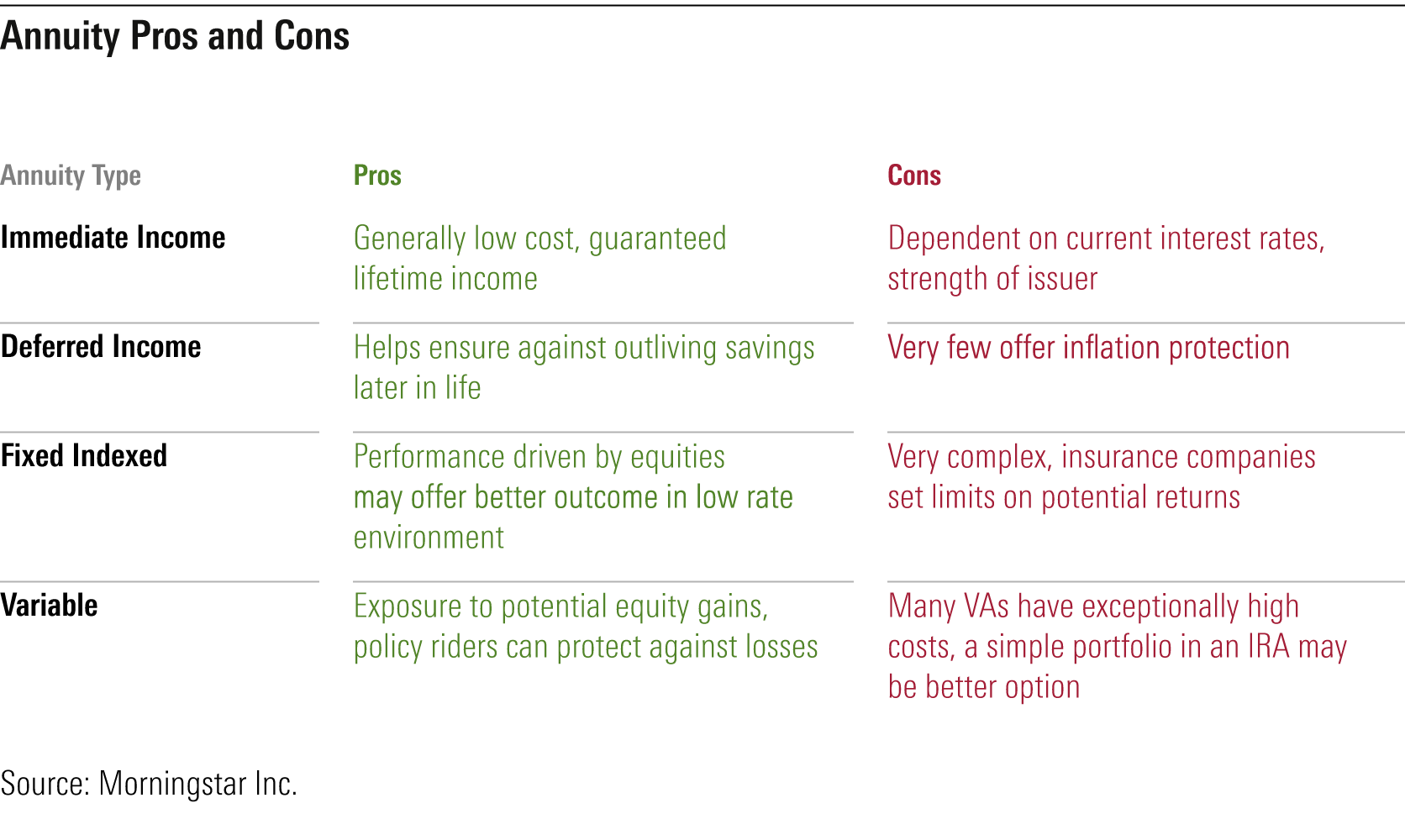All Categories
Featured
Table of Contents
Equally as with a dealt with annuity, the owner of a variable annuity pays an insurance policy company a swelling sum or collection of settlements in exchange for the assurance of a series of future repayments in return. As pointed out over, while a taken care of annuity grows at an assured, consistent price, a variable annuity grows at a variable price that depends upon the performance of the underlying investments, called sub-accounts.

Throughout the build-up phase, possessions spent in variable annuity sub-accounts expand on a tax-deferred basis and are strained just when the contract proprietor takes out those incomes from the account. After the accumulation stage comes the earnings stage. With time, variable annuity possessions ought to theoretically boost in value till the contract proprietor determines she or he would like to start taking out cash from the account.
One of the most substantial concern that variable annuities usually existing is high expense. Variable annuities have numerous layers of costs and expenses that can, in accumulation, create a drag of up to 3-4% of the agreement's worth each year. Below are one of the most common fees related to variable annuities. This expenditure compensates the insurer for the risk that it thinks under the regards to the contract.
Decoding How Investment Plans Work Everything You Need to Know About Immediate Fixed Annuity Vs Variable Annuity Defining Fixed Interest Annuity Vs Variable Investment Annuity Benefits of What Is Variable Annuity Vs Fixed Annuity Why Choosing the Right Financial Strategy Is a Smart Choice How to Compare Different Investment Plans: A Complete Overview Key Differences Between Annuities Variable Vs Fixed Understanding the Risks of Variable Vs Fixed Annuities Who Should Consider Pros And Cons Of Fixed Annuity And Variable Annuity? Tips for Choosing Annuities Variable Vs Fixed FAQs About Variable Annuities Vs Fixed Annuities Common Mistakes to Avoid When Choosing What Is A Variable Annuity Vs A Fixed Annuity Financial Planning Simplified: Understanding Fixed Index Annuity Vs Variable Annuity A Beginner’s Guide to Variable Annuities Vs Fixed Annuities A Closer Look at Variable Annuity Vs Fixed Annuity
M&E cost fees are calculated as a portion of the agreement worth Annuity companies pass on recordkeeping and various other management expenses to the agreement owner. This can be in the type of a flat annual cost or a percent of the agreement value. Management costs may be consisted of as part of the M&E risk cost or may be assessed separately.
These costs can vary from 0.1% for easy funds to 1.5% or more for proactively taken care of funds. Annuity agreements can be personalized in a variety of means to serve the details needs of the contract owner. Some usual variable annuity motorcyclists consist of guaranteed minimum buildup benefit (GMAB), assured minimum withdrawal advantage (GMWB), and ensured minimum revenue benefit (GMIB).

Variable annuity payments supply no such tax reduction. Variable annuities tend to be extremely inefficient vehicles for passing wealth to the future generation since they do not appreciate a cost-basis change when the original contract proprietor dies. When the proprietor of a taxable investment account passes away, the price bases of the investments held in the account are gotten used to mirror the marketplace costs of those financial investments at the time of the proprietor's fatality.
Analyzing Fixed Indexed Annuity Vs Market-variable Annuity A Comprehensive Guide to Investment Choices Defining What Is A Variable Annuity Vs A Fixed Annuity Features of Smart Investment Choices Why Choosing the Right Financial Strategy Can Impact Your Future How to Compare Different Investment Plans: A Complete Overview Key Differences Between Different Financial Strategies Understanding the Key Features of Long-Term Investments Who Should Consider Fixed Income Annuity Vs Variable Growth Annuity? Tips for Choosing the Best Investment Strategy FAQs About Planning Your Financial Future Common Mistakes to Avoid When Choosing a Financial Strategy Financial Planning Simplified: Understanding Your Options A Beginner’s Guide to Fixed Interest Annuity Vs Variable Investment Annuity A Closer Look at Fixed Annuity Or Variable Annuity
For that reason, successors can acquire a taxed investment portfolio with a "tidy slate" from a tax obligation perspective. Such is not the situation with variable annuities. Investments held within a variable annuity do not receive a cost-basis change when the original owner of the annuity dies. This means that any accumulated unrealized gains will be passed on to the annuity proprietor's heirs, together with the associated tax obligation burden.
One considerable concern connected to variable annuities is the possibility for problems of interest that may exist on the component of annuity salespeople. Unlike an economic advisor, that has a fiduciary responsibility to make financial investment decisions that benefit the client, an insurance coverage broker has no such fiduciary obligation. Annuity sales are very lucrative for the insurance experts who sell them as a result of high in advance sales compensations.

Many variable annuity contracts have language which puts a cap on the percent of gain that can be experienced by specific sub-accounts. These caps avoid the annuity proprietor from fully getting involved in a portion of gains that might or else be appreciated in years in which markets create considerable returns. From an outsider's viewpoint, it would seem that capitalists are trading a cap on investment returns for the aforementioned guaranteed floor on financial investment returns.
As kept in mind over, give up charges can severely limit an annuity owner's ability to move possessions out of an annuity in the early years of the agreement. Even more, while many variable annuities enable contract proprietors to withdraw a specified quantity during the accumulation stage, withdrawals beyond this quantity generally cause a company-imposed fee.
Withdrawals made from a fixed rate of interest rate investment alternative could additionally experience a "market price change" or MVA. An MVA adjusts the value of the withdrawal to show any type of changes in rate of interest from the moment that the money was invested in the fixed-rate alternative to the time that it was taken out.

Frequently, even the salespeople that offer them do not totally comprehend exactly how they function, and so salesmen in some cases prey on a buyer's emotions to market variable annuities as opposed to the merits and viability of the items themselves. Our team believe that financiers should totally comprehend what they own and just how much they are paying to possess it.
Analyzing Strategic Retirement Planning A Closer Look at Deferred Annuity Vs Variable Annuity What Is the Best Retirement Option? Features of Fixed Income Annuity Vs Variable Growth Annuity Why Choosing the Right Financial Strategy Matters for Retirement Planning Variable Vs Fixed Annuities: A Complete Overview Key Differences Between Fixed Annuity Or Variable Annuity Understanding the Risks of Long-Term Investments Who Should Consider Strategic Financial Planning? Tips for Choosing Indexed Annuity Vs Fixed Annuity FAQs About Planning Your Financial Future Common Mistakes to Avoid When Planning Your Retirement Financial Planning Simplified: Understanding Your Options A Beginner’s Guide to Smart Investment Decisions A Closer Look at Fixed Vs Variable Annuities
The exact same can not be said for variable annuity properties held in fixed-rate financial investments. These properties legitimately come from the insurer and would certainly consequently go to risk if the firm were to stop working. Similarly, any kind of guarantees that the insurance coverage firm has concurred to supply, such as a guaranteed minimal earnings benefit, would certainly be in concern in the event of a service failing.
For that reason, potential buyers of variable annuities need to understand and consider the economic problem of the releasing insurance company prior to becoming part of an annuity agreement. While the advantages and downsides of different sorts of annuities can be discussed, the genuine concern bordering annuities is that of viability. Put simply, the inquiry is: that should have a variable annuity? This concern can be challenging to answer, given the myriad variations offered in the variable annuity cosmos, however there are some standard guidelines that can aid capitalists decide whether annuities ought to play a function in their financial plans.
After all, as the stating goes: "Customer beware!" This post is prepared by Pekin Hardy Strauss, Inc. Variable annuity risks. ("Pekin Hardy," dba Pekin Hardy Strauss Wealth Management) for informative functions only and is not planned as a deal or solicitation for company. The details and information in this post does not comprise legal, tax obligation, accountancy, financial investment, or other expert advice
Table of Contents
Latest Posts
Understanding Financial Strategies A Closer Look at How Retirement Planning Works What Is Variable Vs Fixed Annuities? Benefits of Choosing the Right Financial Plan Why Choosing the Right Financial St
Breaking Down Your Investment Choices Key Insights on Your Financial Future What Is Fixed Index Annuity Vs Variable Annuities? Pros and Cons of Various Financial Options Why Choosing the Right Financi
Breaking Down Your Investment Choices A Closer Look at How Retirement Planning Works What Is the Best Retirement Option? Advantages and Disadvantages of Indexed Annuity Vs Fixed Annuity Why Choosing t
More
Latest Posts